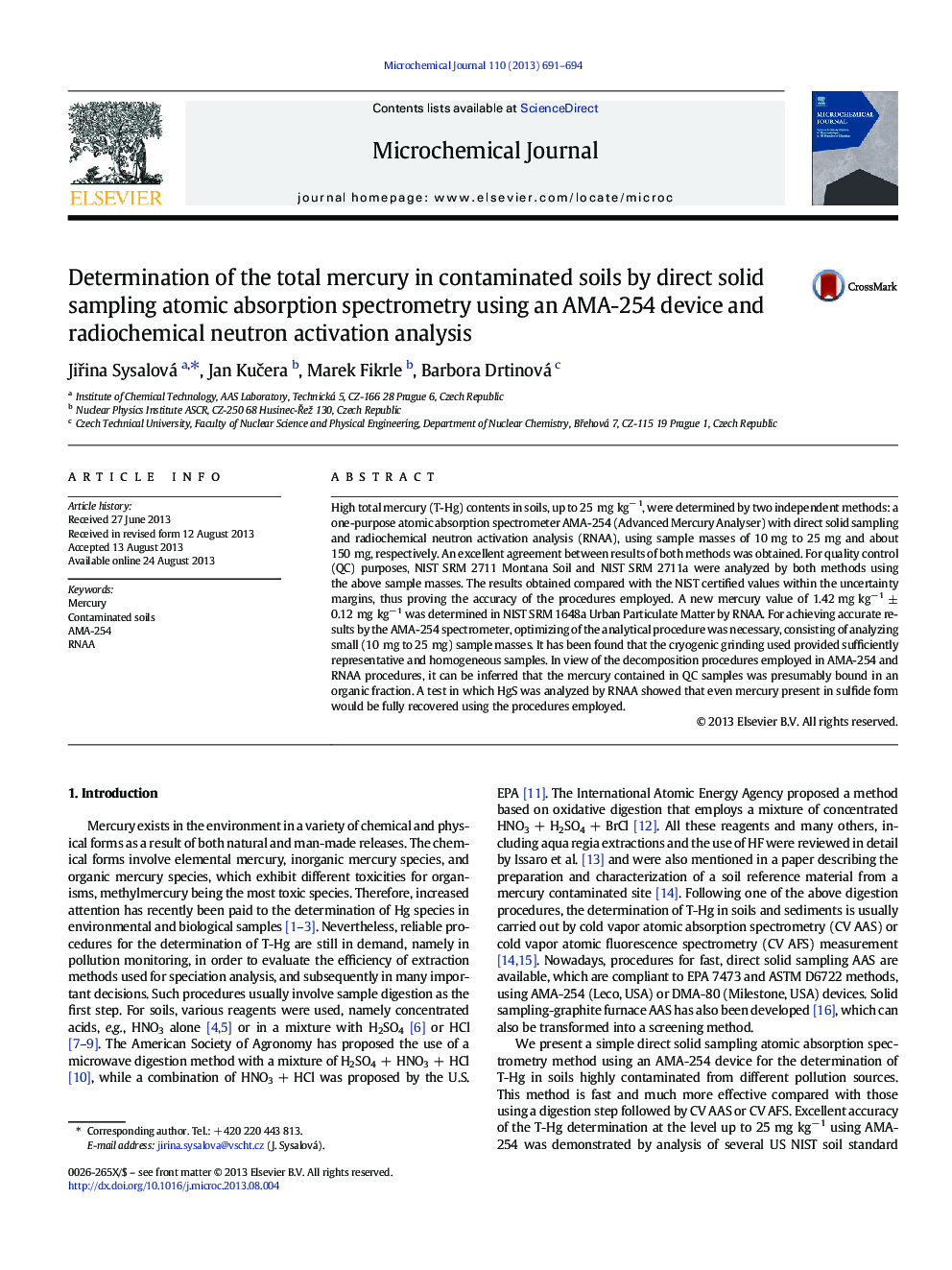| Article ID | Journal | Published Year | Pages | File Type |
|---|---|---|---|---|
| 7644209 | Microchemical Journal | 2013 | 4 Pages |
Abstract
High total mercury (T-Hg) contents in soils, up to 25 mg kgâ 1, were determined by two independent methods: a one-purpose atomic absorption spectrometer AMA-254 (Advanced Mercury Analyser) with direct solid sampling and radiochemical neutron activation analysis (RNAA), using sample masses of 10 mg to 25 mg and about 150 mg, respectively. An excellent agreement between results of both methods was obtained. For quality control (QC) purposes, NIST SRM 2711 Montana Soil and NIST SRM 2711a were analyzed by both methods using the above sample masses. The results obtained compared with the NIST certified values within the uncertainty margins, thus proving the accuracy of the procedures employed. A new mercury value of 1.42 mg kgâ 1 ± 0.12 mg kgâ 1 was determined in NIST SRM 1648a Urban Particulate Matter by RNAA. For achieving accurate results by the AMA-254 spectrometer, optimizing of the analytical procedure was necessary, consisting of analyzing small (10 mg to 25 mg) sample masses. It has been found that the cryogenic grinding used provided sufficiently representative and homogeneous samples. In view of the decomposition procedures employed in AMA-254 and RNAA procedures, it can be inferred that the mercury contained in QC samples was presumably bound in an organic fraction. A test in which HgS was analyzed by RNAA showed that even mercury present in sulfide form would be fully recovered using the procedures employed.
Keywords
Related Topics
Physical Sciences and Engineering
Chemistry
Analytical Chemistry
Authors
JiÅina Sysalová, Jan KuÄera, Marek Fikrle, Barbora Drtinová,
